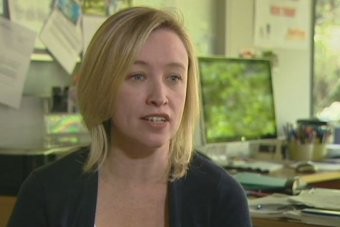
Autism experts have lamented reports a 10-year-old boy was placed in a cage at a Canberra primary school, saying it signals a national standard for autism education in mainstream schools is urgently required.
ACT Education Minister Joy Burch confirmed the unacceptable "withdrawal space" had been built in a classroom to deal with a student with challenging behaviour.
The two-metre by two-metre area, enclosed in pool fencing, was removed last Friday after a complaint to the Children and Young People's Commissioner.
The ACT Education and Training Directorate has since launched an independent investigation into the incident, revealed on World Autism Awareness Day.
Autism Awareness Australia director Nicole Rogerson said the incident should be seen as a red flag.
"I don't think you'd have to be a rocket scientist to work out it's not an appropriate way to manage a child," she said.
"The truth is, children with autism are often put into education systems with very limited support.
"There's a teacher who has been in such desperate, dire straits that they've seen that this is in any way, shape or form a good idea."
National standard for autism education urgently needed
Mrs Rogerson said there was currently no national standard for teaching students with autism in mainstream schools.
She said more funding and specialist training was needed to make sure all teachers are able to deal with autistic students using industry best practices.
"Autism has been in the too-hard basket for a long time with successive Australian Governments, both federally and state," she said.
"Gains can be made, but it requires intensive intervention, and there needs to be a national standard to what that is.
Autism at a glance
- ASD is a group of neurobiological disorders affecting a person's communication and social abilities
- ASD affects about one in 160 children, with boys four times more likely to be affected than girls
- Symptoms are different in each person affected but can include repetitive behaviours, difficulty relating to people, and sensitivity to stimulation including touch, sounds and sight
- Symptoms can appear as early as the first year of life
- There is no cure but can be managed with appropriate and early intervention
- Genetic and environmental factors are being investigated as the cause which as yet is undetermined
- The rates of ASD are the same in both vaccinated and non-vaccinated populations
ABC Health and Wellbeing
"It's intensive and unfortunately intensive means expensive."
Dr Trevor Clark, the national director of education for Autism Spectrum Australia, said physical segregation of children with autism was not current policy.
"In terms of time out or restrictive space, our organisation would call it a restricted practice," he said.
"Under our philosophy of positive behaviours, we wouldn't ever use such a practice.
"Those are really techniques we would use 20 or 30 years ago, when we didn't understand in the field of disability how to manage challenging behaviour."
Dr Clark said children with autism are often integrated into mainstream school classes, and many schools have adopted positive reinforcement strategies.
"For our children to succeed and to step into mainstream cohorts very well, they do need wrap around support," he said.
"The teachers in schools must understand autism, they must understand the challenges and then of course accommodate the classroom, the correctional educational environment to make it work for our children."
From other news sites:
- The Daily Telegraph: Canberra principal suspended after 'cage built for autistic student'
- Yahoo!7 News: Autistic boy put in cage at Canberra school - Yahoo7
- The Sydney Morning Herald: Children with autism caged and abused at school
- Daily Mail: Principal suspended after autistic boy, 10, is locked in a small cage by his teachers, who used specially built structure as his 'withdrawal space'
- The Guardian: Canberra school investigated after cage-like enclosure built for special needs student